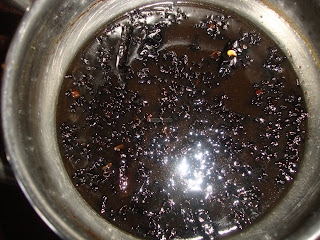Mushroom Peas Curry
For a while sighting some justifiable reasons my husband insisted on having proper south Indian meal for all his meals and that just left me having chapattis or any tiffin. Now my husband is back to his multigrain diet and my way of eating so that is a relief. On the very first evening he was back to this diet, I obviously had to make something nice so it is a great welcome back. I had some mushrooms on hand and decided to make peas mushroom curry. It was indeed very good that we both fancied it the next day as well. I did adopt a slightly different way of cooking wherein I had cooked the onion and tomato in a wee bit of water rather than by themselves. I have now found this successful and may try some improvements and more recipes this way. Honestly, I was surprised it actually made a difference. Here is how I did it…
300gms closed cup mushrooms or button mushrooms (pick your choice)
4 tomatoes, roughly chopped
1 big red onion, roughly chopped
1 red onion, finely chopped
3 cloves garlic, chopped
1 inch piece ginger, chopped
1 cup cooked peas
1 teaspoon kasoori methi (driend fenugreek leaves)
1 teaspoon cumin powder
1 teaspoon coriander powder
1 teaspoon garam masala
1 teaspoon chilly powder
1 teaspoon cumin seeds
Turmeric powder
Salt to taste
Cooking oil
Bring together the onion, tomato, ginger and garlic in a saucepan and add quarter cup water. Cook until tomato is well done. Cool and grind to a fine puree
Heat about a teaspoon oil and add the cumin seeds and once it browns add the finely chopped onions and fry.
Add the mushrooms and cook until soft. You could also add peas and cook it with mushrooms rather than boil it separately, either way add the peas.
Add the ground puree and when it begins to boil, add the spice powders and kasoori methi and boil.
Add salt and some water and simmer for about 10 minutes.
Serve hot with rice or any bread.


















































